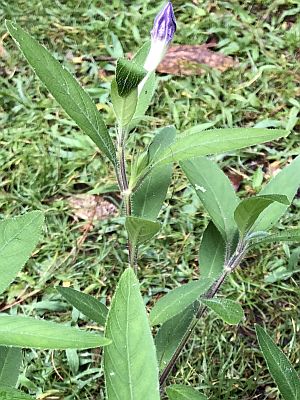
Native Petunia/Wild Petunia
Native or wild petunias can be found throughout our state with some variations in the leaf and bloom appearance. Wild petunias are really not petunias at all but the blooms look like petunias. Blooms are mostly blue to lavender but may come in white or pink. Native petunias are actually members of the Acanthus family. These are not the Mexican petunia.
Unlike true petunias, they bloom during the hot season when others plants have a hard time keeping up. It is hardy but does not do well in swampy or shady situations. They don’t seem to require any fertilization and I have seen no insect or disease issues. Native petunias are perennials and can be aggressive as the plant self-seeds. When the seeds mature, plants will throw out seeds up to 10 feet. Propagation is by seeds or cuttings.
Native petunias make great ground cover. They act as pollinator plants attracting bees, butterflies. hummingbirds and other insects. They serve as host plants to the Common Buckeye Butterfly. Check with native plant nurseries, on line sources and friends for plants.

Ruellia caroliniensis or Ruellia ciliosa blooms are bluish lavender small trumpets with star-like margins. They bloom on the edges of stems of ovate elliptic-lanceolate leaves. Plants are small to moderate size up to 14 inches and appear to trail. I found the plant thriving in rocky, hard clay soil that drains well in a weedy part of my yard but at the edges of my garden beds. It was growing in full sun to part shade. The blooms on the terminal part of stem for about a day and fall off. Blooms Spring, Summer and Autumn but I noticed it blooming in mid-July and it continues to bloom mostly growing on the Northshore.

Ruellia nudiflora or violet wild petunia is found in Jefferson, Plaquemines, Orleans, St. Bernard, St. Charles, St John as well as several other parishes scattered throughout Louisiana. Violet/Purple trumpet shaped flowers bloom April to October, on the terminal part of the stem as well. The stems appear a bit taller from the base of the plant unlike the Northshore variety I found. From the information I found, care is generally the same.

By Karen Blackburn
